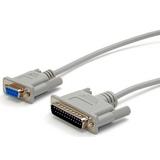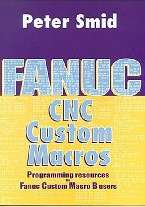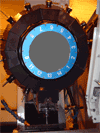|
Drill tap machine tools selection, design, and purchasing considerationsBelow you will find my opinions on design types and how to select the drill tap machine for you. Some of the information does apply to larger machine tools too, but primarily drill tap machines. Please keep in mind machine tools will continually change and there are many other considerations. Some of the things below may be only minor annoyances that you will see occasionally and you should not base your choice solely on the information below.
|
||
Types of Turrets:
|
|||
Rotary Magazine above spindle Type tool changer (The best and most reliable)Advantages:
Disadvantages:
|
|||
Tool change arm type tool changerAdvantages:
Disadvantages:
|
Types of pallet changers
|
|
Side by side shuttle typeAdvantages:
Disadvantages:
|
|
Rotary table type pallet changers
|
|
High pressure coolant optionThis could make or break a machine tool nowadays. High pressure coolant in drilling and tapping especially deeper holes can make a huge difference in both cycle time and tool life. May want to ask the dealers to setup a demo of your part for you to try with and without high pressure coolant so see for sure if it will benefit you or at least get some opinions. |
|
| Interfacing and automation
Many of the drill tap machines have excellent automation capabilities. Many signals are available or can be assigned to an input or output terminal. Might want to ask the dealer of this capability. It will save some money during automation and will be much easier for your own employees to perform if they wanted to. Also see if external M-codes are an option. Many of them already come with the machine. Some builders will sell you the m-code option in which they will provide the ice cube relays for the M-codes. You do not need the relays if you are planning on using a PLC. |
|
| Using Large Facemills 2.5 " or above.
Using large face mills on these machines you can often times expect problems. Here are some recommendations to avoid these problems. Because the drill tap machines are so small chips are thrown around the machine and bounce off of everything and get into everywhere. Usually getting into limit switches or getting into the groove of the tool holder causing problems throwing tools. Always use aluminum heads or lighter material for face mills above 2". Furthermore always balance the tools since most drill tap machines are now above 12,000 RPM. If at all possible flood the area with coolant to knock down the chips to keep them from flying I would not recommend any drill tap machine if you are not using any coolant. If anything a larger machine might be better. In fact most machine tools will problems when not using coolant so beware of this. |
|
| HSK Tooling (30 taper)
HSK 30 Taper I do not recommend for several reasons. One is the tool groove where the tool change arm goes into will often get chips in it. The tool change arm goes in and wedges them into the groove. If you do not clean these out manually the can build enough that the arm no longer grabs the tool fully and therefore throws it occasionally. Then after it does the holder is often damaged. The taper wall is very thin and will be egg shaped and if not caught or checked with a straight edge can cause more problems seating properly in the spindle. Alignment is also very critical on HSK and can cause intermittent problems if it is slightly off. If chips get into clamp area on the inside this can cause many other problems. Also if you are using large face mills with aluminum the chips will fly onto the tools and the airblow that is supposed to clean them off as the tool enters the spindle doesn't always do a very good job. Therefor the tool may run out due to chips stock on the face. If you are not familiar with HSK it has contact on both the face and inside taper of the spindle. BT/CAT only has taper contact. |
|
|
|
|
| I will be adding more information shortly please check back at a later date, Thanks | |
| Hope you've learned enough to help you make a good decision for purchasing you next drill tap machining center. If anyone has anything to add that I may have forgot please let me know as always so I can provide the best information possible. Thank you |






